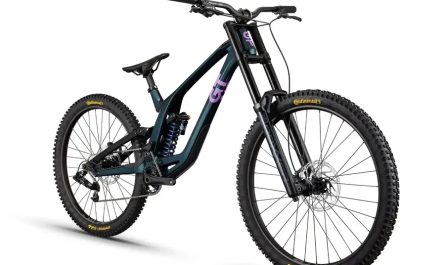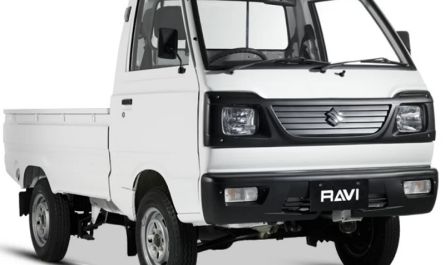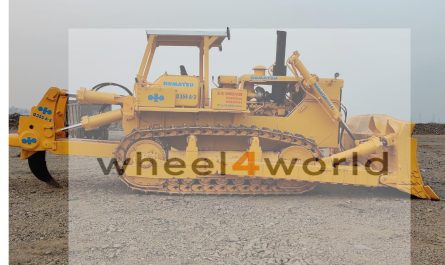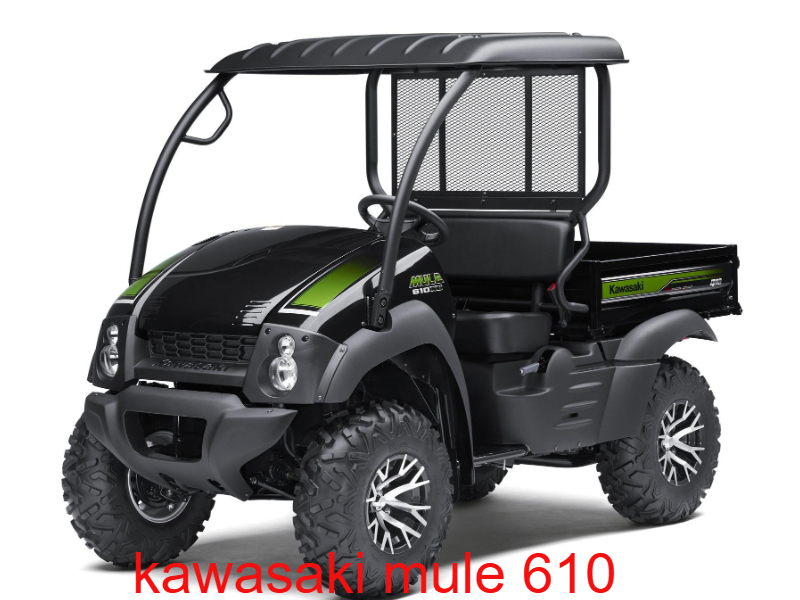
Introduction
The Kawasaki Mule 610 represents a well-engineered compact utility vehicle (UTV) designed for demanding applications in agriculture, construction, and recreation. As part of Kawasaki’s Mule lineup, this model integrates durability, efficiency, and adaptability to meet the needs of professionals and enthusiasts alike. This technical overview delves into its mechanical specifications, operational advantages, applications, and maintenance requirements, providing a scholarly perspective on its engineering and usability.
Engineering and Design Considerations
1. Structural Integrity and Frame Composition
The Mule 610 is engineered with a high-strength steel chassis, ensuring durability while maintaining a compact profile. The lightweight yet robust frame enhances maneuverability in confined workspaces while providing structural resilience against impact and vibration stresses.
2. Powertrain and Engine Performance
At the core of the Mule 610 is a 401cc air-cooled, four-stroke, single-cylinder engine. This power unit, designed for optimal thermal efficiency, features an overhead valve (OHV) configuration to enhance combustion efficiency and prolong engine longevity. The continuously variable transmission (CVT) allows for seamless power delivery, eliminating the need for manual shifting and thereby reducing operator fatigue.
3. Drivetrain and Terrain Adaptability
The selectable 4WD system enables operators to transition between two-wheel and four-wheel drive based on terrain conditions. This adaptability enhances traction in low-friction environments, such as wet or uneven terrains. The differential lock further stabilizes traction distribution, making it suitable for extreme off-road applications.
4. Suspension and Load Management
The MacPherson strut front suspension and unit swing rear suspension systems provide enhanced shock absorption, ensuring stability and comfort over rugged terrain. The Mule 610 supports a payload capacity of 1,100 pounds, with a cargo bed designed for material transport in agricultural and industrial applications. Its towing capability, also rated at 1,100 pounds, allows for efficient load management in various operational contexts.
5. Fuel Economy and Efficiency
With a 3.7-gallon fuel tank, the Mule 610 is optimized for fuel efficiency, reducing operational costs over extended use. Its fuel system is calibrated to maintain optimal air-fuel ratios, ensuring consistent performance while minimizing emissions.
Performance Metrics and Operational Suitability
Handling and Maneuverability
The low center of gravity and lightweight chassis contribute to the Mule 610’s superior handling characteristics. Responsive rack-and-pinion steering allows precise directional control, particularly advantageous in dynamic work environments such as agricultural fields and construction zones.
Braking and Safety Mechanisms
The hydraulic drum braking system ensures reliable stopping power under load, while the vehicle’s engine braking mechanism provides additional deceleration support on inclines. These safety features mitigate the risk of mechanical strain and enhance operator control in variable terrain conditions.
Functional Applications
1. Agricultural Operations
- Facilitates transport of feed, irrigation equipment, and farm tools.
- Efficiently traverses uneven farmland without excessive soil compaction.
- Supports livestock management and perimeter security patrols.
2. Industrial and Construction Utility
- Transports construction materials such as gravel, bricks, and tools across job sites.
- Enhances site efficiency with reduced manual transport labor.
- Utilized in landscaping for debris removal and terrain preparation.
3. Recreational and Hunting Adaptability
- Customizable for hunting applications with accessory mounts and lighting enhancements.
- Supports game retrieval and off-road navigation in dense woodland environments.
- Operates quietly compared to traditional off-road vehicles, minimizing wildlife disturbance.
4. Ranching and Livestock Management
- Assists in pasture maintenance and fence repair logistics.
- Provides rapid mobility for veterinary and feeding operations.
- Improves efficiency in large-scale livestock transport and care.
5. Estate and Property Maintenance
- Utilized for general land management and landscaping.
- Provides winter utility with optional plow attachments.
- Ideal for firewood transport and outdoor maintenance tasks.
Maintenance and Longevity Optimization
1. Engine and Lubrication System Maintenance
- Routine oil changes (every 50–100 operating hours) are critical for sustained performance.
- Manufacturer-recommended lubricants should be used to ensure compatibility with engine tolerances.
2. Air Intake System Management
- Regular cleaning of the air filter prevents particulate buildup that can compromise engine efficiency.
- Replacement of filters at specified intervals enhances longevity and fuel economy.
3. Tire and Traction Control
- Tire pressure should be consistently monitored and adjusted for specific terrain conditions.
- Tread wear assessments ensure continued traction and operational safety.
4. Chassis and Suspension Servicing
- Periodic lubrication of suspension joints and drive shafts reduces mechanical wear.
- Inspection of shock absorbers and bushings mitigates performance degradation.
5. Braking System Integrity
- Brake pads should be routinely inspected and replaced as necessary to maintain optimal stopping power.
- Hydraulic fluid levels must be monitored to ensure consistent braking response.
6. Battery and Electrical System Upkeep
- Battery terminals should be cleaned regularly to prevent corrosion.
- Storage in a dry environment mitigates electrical system degradation over time.
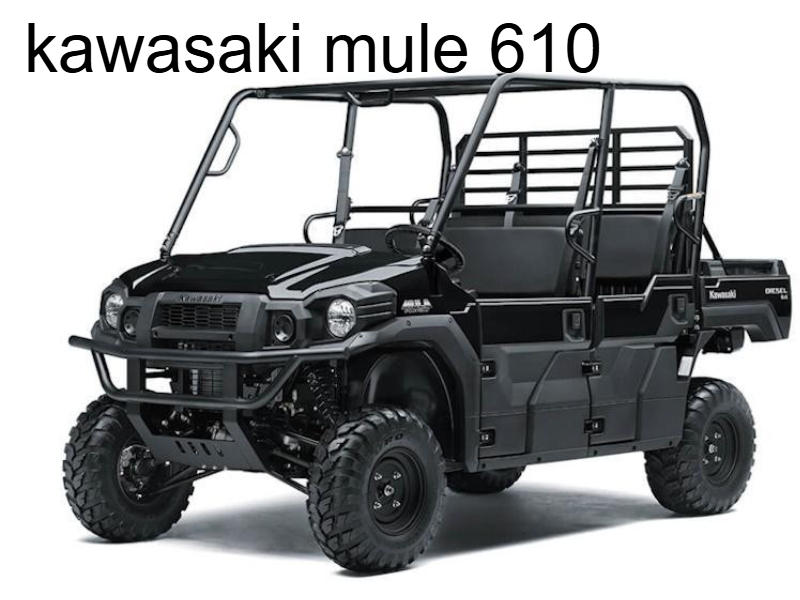
Comparative Market Positioning and Investment Considerations
1. Cost-Effectiveness and Economic Viability
- The Mule 610 presents a low total cost of ownership compared to larger utility vehicles, owing to its fuel efficiency and minimal maintenance requirements.
- The durable design ensures extended service life, making it a cost-efficient investment for businesses and landowners.
2. Usability and Operator Learning Curve
- The automatic transmission and ergonomic controls facilitate a short learning curve, making it accessible for both novice and experienced operators.
- The intuitive interface and straightforward design contribute to enhanced user confidence and operational efficiency.
3. Durability and Longevity
- Engineered for high-mileage endurance, the Mule 610 demonstrates resilience in diverse working environments.
- Its robust frame and weather-resistant components contribute to prolonged usability with minimal mechanical failures.
4. Resale Value and Depreciation Trends
- Kawasaki utility vehicles retain significant resale value due to their mechanical reliability and industry reputation.
- Market demand for compact UTVs remains strong, reinforcing long-term investment stability.
Conclusion
The Kawasaki Mule 610 embodies a balance of compact utility, efficiency, and durability, making it an optimal choice for professionals across various industries. Its engineered adaptability, fuel-efficient powertrain, and user-friendly operation position it as a formidable asset in both commercial and personal applications. By implementing a structured maintenance regimen and leveraging its diverse functionalities, operators can maximize its longevity and return on investment. As utility terrain vehicles continue to evolve, the Mule 610 remains a benchmark for performance and reliability in the UTV sector.
